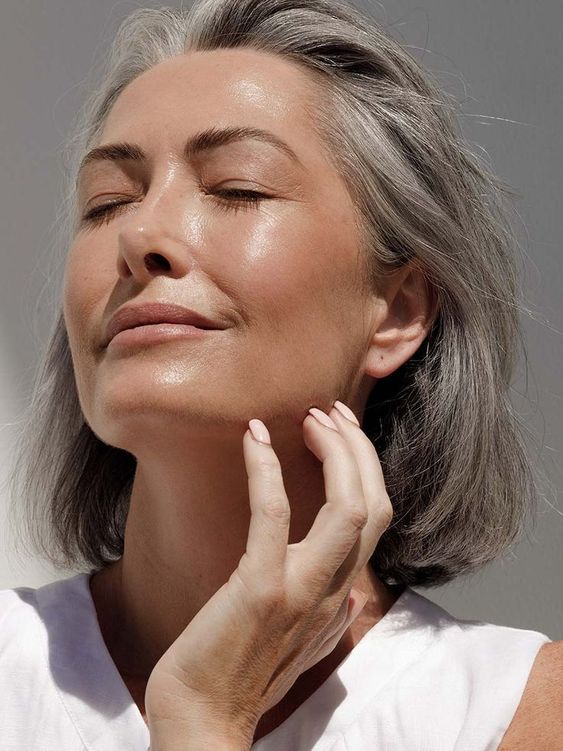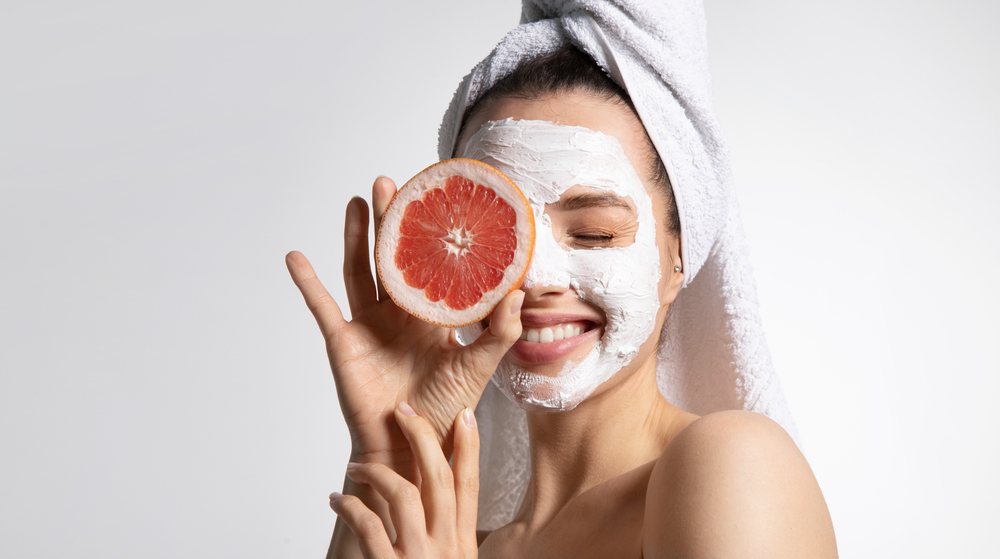Let’s dive into the wonderful world of skincare ingredient layering! Imagine you’re mixing up a special potion for your skin—it’s like creating magic! You want it to be amazing for your skin, not a disaster. The key is to find just the right mix of ingredients that get along well, while steering clear of anything that could mess up your lovely skin..
Your skincare routine as a carefully crafted recipe. Each skincare ingredient is like a superhero with its special powers. Cool, right? But here’s the thing – not all superheroes team up well. If you mix the wrong ones, it’s like a superhero battle on your skin, and nobody wants that drama! It can make your skin upset, like red and irritated, and that’s definitely not the goal. Let’s keep it simple and mix the right superheroes for happy, balanced skin, deal?

So, let’s unravel the mystery of skincare match-making!
Understand Your Ingredients
First things first, get to know your ingredients. Some are like the dynamic duo, working together to give your skin the love it deserves. Vitamins as little buddies for your skin. So, vitamin C and niacinamide are like the perfect duo, they work really well together. They’re like the dream team for your skin. But here’s the thing – when they team up, it’s like they have a little disagreement instead of working together. You know how some people just don’t vibe? Well, these two are a bit like that. So, it’s cool to figure out which vitamins are best pals and which ones might not be the best match..
Layering Order Matters
Just like following a recipe, the order in which you apply your skincare products matters. Start with the lighter, water-based products and move on to the heavier, oil-based ones. This helps each product to be absorbed properly and do its job without interference.
Patch Testing
Before going all out with a new combination of products, it’s wise to do a patch test. Apply a small amount of the products you plan to use on a small area of your skin to see how it reacts. This way, you can avoid potential disasters on your entire face.
Balancing Act
Balancing act is the key here. If you’re using a powerful active ingredient, like retinol, consider using soothing and hydrating ingredients to balance it out. This prevents your skin from becoming overwhelmed and helps maintain a healthy, happy complexion.

Listen to Your Skin
Your skin is like a friend trying to tell you something. If it’s feeling dry, irritated, or just not happy, listen to it! Adjust your routine accordingly. Maybe give certain ingredients a break or introduce them more slowly. Your skin’s happiness should be your top priority.
Decoding Skincare: The Lowdown on Retinol and Exfoliating Acids
Ever wondered about the real deal with skincare ingredients like retinol and exfoliating acids? Well, buckle up because we’re about to unravel the mysteries behind these skin-loving components.
Retinol Unleashed: A Cellular Game-Changer
Picture retinol as the powerhouse your skin needs. Retinol as a superhero for your skin. Let me break it down for you in super simple terms. So, imagine retinol as your skin’s superhero. It does awesome things like making your skin cells refresh quicker, keeping your skin firm by boosting collagen, and battling those pesky free radicals. Now, here’s the cool twist: think of retinol as the sidekick to vitamin A. When it hangs out on your skin, it transforms into retinoic acid – the supercharged version of vitamin A, loaded with goodness for your skin. It’s like a superhero team-up for your skin’s well-being!. It’s like a dynamic duo working wonders for your skin!
The Chemistry Behind the Scenes
Now, let’s talk chemistry. While retinol is a rockstar on its own, it can get a bit too eager when mingling with certain ingredients, like AHAs and BHAs. These exfoliating acids share the same goal as retinol – helping your skin shed old cells. But here’s the catch: using them together on the same night (note: skip the morning) might be a bit overwhelming for your skin. It’s like they team up to weaken your skin’s protective barrier, potentially leading to redness, tightness, and parched skin.
Charting Your Skincare Course
So, what’s the strategy? Give your skin some space to breathe. Use retinol and exfoliating acids on different nights to let each ingredient work its magic without bombarding your skin. If your skin tends to be on the sensitive side, consider taking it slow – maybe every other week instead of every night.
But here’s a twist in the skincare tale: enter PHAs (polyhydroxy acids). These are the laid-back cousins of AHAs. They not only gently exfoliate your skin but also act as hydrating heroes. So, if you’re navigating the world of exfoliation, PHAs might just be your exception to the rule.
Retinol and Vitamin C.
These two skincare superstars as the cool kids in the beauty world. Individually, they’re like the lead singers of fantastic songs. However, when you mix them, it’s a bit like playing both songs simultaneously—it might not be as awesome. But hey, no need to stress! You can still get all the good stuff without any hassle.
Our skincare expert, Gabriela, has some smart advice. In the morning, go for Vitamin C before applying sunscreen. It’s like giving your skin a double layer of protection. Sunscreen shields you from those pesky UV rays, while Vitamin C fights off the free radicals that sneak in. They make a powerful team, keeping your skin in top shape all day long.
Now, let’s talk about nighttime. Enter Retinol, your skin’s nighttime companion. While you catch those Zs, Retinol is working behind the scenes, supporting your skin’s natural repair and growth. It’s like sending in the repair crew while you sleep, ensuring you wake up with a refreshed complexion.

But what if regular Retinol feels a bit too strong? No worries! Meet retinyl palmitate, the gentler cousin. It plays nice with all skin types and can even team up with Vitamin C for an extra boost.
Here’s a tip: If you want to use both Vitamin C and retinyl palmitate together, make sure they’re in the same skincare product, like Skingredients Skin Protein. This way, you know they’ve been tested to work well together.
So, there you have it – a skincare routine that lets Retinol and Vitamin C shine on their own. Treat your skin to this dynamic duo, and watch it glow with health and radiance.
Vitamin C and AHAs & BHAs
Okay, so Vitamin C is like a superhero for your skin, protecting it from bad stuff. But here’s the catch – it’s a bit picky. It needs the right pH balance to do its magic. If you mix it with AHAs or BHAs (those are other skin care things), it can mess up this balance and your Vitamin C won’t work properly.
Our expert, Gabriela Duffy Morales, suggests using AHAs and BHAs at night. These are like helpers for your skin, but they can make it more sensitive to sunlight, even if you use sunscreen. So, save your Vitamin C for the morning, and use AHAs or BHAs on nights when you’re not using retinol. Simple, right? Your skin will thank you!
In the intricate world of skincare, achieving radiant and healthy skin is akin to mastering the art of potion-making. As we’ve journeyed through the maze of ingredient pairings, layering techniques, and the secrets behind potent components like retinol and exfoliating acids, a clear roadmap has emerged.
Understanding the individuality of each ingredient is the first step – some form dynamic duos, while others clash. Just like a well-crafted recipe, the order of application matters, and patch testing ensures harmony before committing to a full routine. The key is a delicate balancing act, especially when dealing with powerful ingredients like retinol.
In the realm of retinol and exfoliating acids, we’ve unraveled the cellular game-changer that is retinol, along with the chemistry behind its compatibility with exfoliating acids. The strategy: give each ingredient its time to shine, allowing for optimal efficacy without overwhelming the skin. And let’s not forget the introduction of PHAs, the laid-back heroes of exfoliation.
The synergy between retinol and vitamin C has been demystified, offering a day-and-night strategy for harnessing their individual benefits. And for those who find regular retinol a bit too robust, the gentler retinyl palmitate steps in, forming a compatible duo with vitamin C.
The final piece of the puzzle involves the delicate dance between vitamin C and AHAs/BHAs. Knowing the superhero qualities of vitamin C and its pH sensitivity, a simple solution emerges – reserve vitamin C for the morning to ensure optimal efficacy, while AHAs and BHAs can take the night shift.
Conclusion
Navigating the skincare puzzle demands an understanding of ingredients, a thoughtful approach to layering, and a willingness to adapt to your skin’s needs. With the right knowledge, your skincare routine transforms into a personalized roadmap, guiding you towards the glow and radiance your skin deserves. So, listen to your skin, embrace the magic of ingredient pairings, and revel in the journey towards your ideal skincare concoction.
FAQs
Why is it essential to understand the compatibility of skincare ingredients?
Understanding the compatibility of skincare ingredients ensures that they work synergistically, avoiding potential clashes that could lead to skin irritation or other undesirable effects. It’s like creating a harmonious recipe for your skin.
How does the order of application in skincare products contribute to their effectiveness?
Similar to following a recipe, the order of applying skincare products matters. Starting with lighter, water-based products and progressing to heavier, oil-based ones allows each product to be absorbed properly, optimizing their individual benefits without interference.
What role does patch testing play in a skincare routine?
Patch testing is a crucial step before incorporating new combinations of skincare products. It involves applying a small amount of the products to a small area to observe how the skin reacts. This helps prevent potential disasters on the entire face and ensures compatibility with the skin.
How can a skincare routine be balanced when using powerful active ingredients like retinol?
Balancing act is key when using potent active ingredients like retinol. Pairing it with soothing and hydrating ingredients helps prevent overwhelming the skin, maintaining a healthy and happy complexion.
What is the recommended strategy for using retinol and exfoliating acids in a skincare routine?
The recommended strategy is to use retinol and exfoliating acids on different nights, allowing each ingredient to work its magic without overwhelming the skin. For those with sensitive skin, a slower introduction, perhaps every other week, is suggested.
How can retinol and vitamin C be effectively incorporated into a skincare routine for day and night?
In the morning, vitamin C can be applied before sunscreen for dual protection against UV rays and free radicals. For nighttime, retinol becomes the go-to ingredient, supporting the skin’s natural repair and growth process.
Why is it advised to use vitamin C in the morning and AHAs/BHAs at night in a skincare routine?
Vitamin C requires a specific pH balance to be effective, and using it with AHAs/BHAs can disrupt this balance. To ensure optimal efficacy, it is recommended to use vitamin C in the morning and AHAs/BHAs at night, avoiding interference with their individual benefits.






